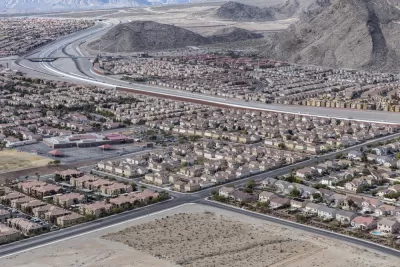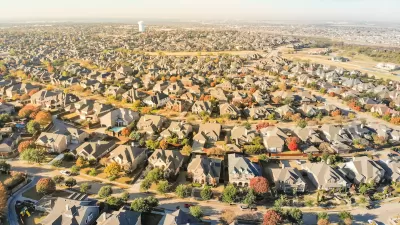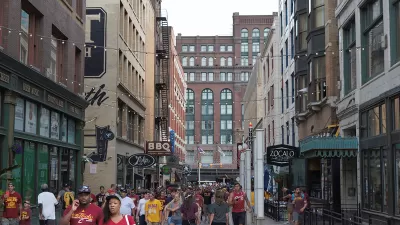Low-income families living in high-sprawl neighborhoods are limited in their access to education, jobs, and other amenities, often trapping them in a cycle of poverty.

New research from the University of Utah reveals that sprawl can have a measurable, negative economic impact on low-income American households.
According to a piece in Science Blog, “A series of studies from the University of Utah has found that children from low-income families who grow up in areas characterized by urban sprawl face significantly reduced earning potential compared to those raised in denser neighborhoods. The research provides the most detailed evidence yet of how city planning decisions could be reinforcing cycles of poverty across generations.”
The researchers used data from more than 71,000 U.S. census tracts, defining sprawl as “urban environments with poor pedestrian access, heavy car dependency, and sharp separation between residential, commercial and business areas.” According to the study, the annual expected income of a person growing up in a very low sprawl tract is, on average, roughly 10 percent higher than that of people brought up in high-sprawl neighborhoods.
Perhaps most striking is how sprawl affects families differently based on income level. While children from low-income families see reduced earning potential in sprawling areas, the opposite appears true for wealthy families.
The researchers note that while their study does link sprawl and lowered social and economic mobility, the causation is not entirely clear. However, “local city planners and officials need to consider the broader social implications and choose zoning patterns and regulations that are best for all residents, particularly trying to reduce sprawl and increase infill development may have a long-lasting positive impact on children’s economic possibilities.”
FULL STORY: Urban Sprawl May Trap Low-Income Families in Poverty Cycle

Alabama: Trump Terminates Settlements for Black Communities Harmed By Raw Sewage
Trump deemed the landmark civil rights agreement “illegal DEI and environmental justice policy.”

Planetizen Federal Action Tracker
A weekly monitor of how Trump’s orders and actions are impacting planners and planning in America.

The 120 Year Old Tiny Home Villages That Sheltered San Francisco’s Earthquake Refugees
More than a century ago, San Francisco mobilized to house thousands of residents displaced by the 1906 earthquake. Could their strategy offer a model for the present?

In Both Crashes and Crime, Public Transportation is Far Safer than Driving
Contrary to popular assumptions, public transportation has far lower crash and crime rates than automobile travel. For safer communities, improve and encourage transit travel.

Report: Zoning Reforms Should Complement Nashville’s Ambitious Transit Plan
Without reform, restrictive zoning codes will limit the impact of the city’s planned transit expansion and could exclude some of the residents who depend on transit the most.

Judge Orders Release of Frozen IRA, IIJA Funding
The decision is a victory for environmental groups who charged that freezing funds for critical infrastructure and disaster response programs caused “real and irreparable harm” to communities.
Urban Design for Planners 1: Software Tools
This six-course series explores essential urban design concepts using open source software and equips planners with the tools they need to participate fully in the urban design process.
Planning for Universal Design
Learn the tools for implementing Universal Design in planning regulations.
Clanton & Associates, Inc.
Jessamine County Fiscal Court
Institute for Housing and Urban Development Studies (IHS)
City of Grandview
Harvard GSD Executive Education
Toledo-Lucas County Plan Commissions
Salt Lake City
NYU Wagner Graduate School of Public Service





























